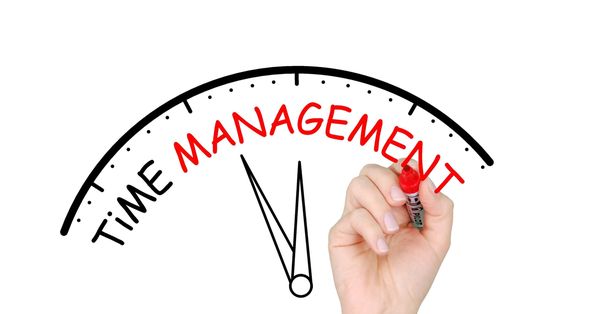
A Cheaper, More Foolproof Way to Import Goods — To Anywhere
8-minute read
1. Can you deliver?
Part of securing export orders is making sure you can deliver. Many Kiwi exporters have underestimated the volume opportunity they encounter overseas. Similar issues arise for NZ importers.
Before anyone from your business travels overseas prospecting for business, give some thought to what might happen if your export quest does succeed. In particular, do you have the resources and capacity to deliver?
Fulfilling your first export commitments on time and within budget can be crucial to your future success. In many cases, it can be difficult enough to sell your product or service from a country regarded as distant and tiny by overseas customers.
This makes it all the more important to demonstrate that you have the ability to be a committed and reliable supplier who can meet demand on time and within budget.
For example, after showing samples to an overseas customer, the owner of a New Zealand business was delighted to receive an order for a whole container load. He promptly signed an agreement to deliver the goods by a set date.
However, when he got back home he discovered that the major supplier of a critical component did not have the capacity to deliver the required quantity of components within the agreed timeframe.
As a result, the order was shipped late. Fortunately, the contract did not have a penalty clause for late delivery, but the business still lost considerable goodwill with the overseas buyer and suffered from reduced credibility.
All this could have been avoided if the business owner had checked first with the component supplier.
2. Guidelines to ensure you can meet demand
If you manufacture products (or outsource manufacturing to others) then consider these factors:
- Do you need to invest in more capacity? Can you scale up your present manufacturing capacity?
- What extra equipment might you need? It is worth completing some contingency planning in advance. For example, if the machinery you need has to come from overseas, what is the delivery time? If the machine is a later model from existing machinery, will you need technical help to install the machinery and train staff in its use? You need to take these factors into account when you negotiate delivery timeframes.
- Can you secure the finance for this equipment? Sort out possible credit lines in advance.
- What extra staff would you need? Can you secure skilled operators at short notice in a tight labour market?
- How will any extra costs affect your product pricing? Greater volume production may mean that that unit costs are lowered, but then the capital and implementation costs outlined above may negate this, at least in the short term. You need to sit down with your accountant or financial advisor to review your pricing strategy.
- Can you source the materials and components? Check that your suppliers have the capacity and commitment to help you fulfil any export orders.
- Do you need to source alternative suppliers? Are your suppliers capable of gearing up for much larger export volumes? Good contingency planning should include research into alternative sources of supply, and obtaining sample and prices from possible suppliers.
- Can you maintain quality and consistency? Quality issues can compound when you are producing larger volumes, and the last thing you need is for a whole shipment to be rejected because it is substandard.
- Can you sustain export deliveries? Fulfilling one large export order can be a satisfying achievement, but what if you have to do this on a regular basis? What would the impact be, for example, on your local customers?
- Can you manage the whole process? It is important to have a good project management system in your business. Ask your business contacts or industry association for advice on suitable project planning software.
If you outsource the manufacturing of your products, then work through these same questions with the manufacturer.
- Do they have the capacity, willingness and financial capability to scale up if necessary? Are they committed and efficient enough to do this, can they secure the finance and can they maintain the required quality?
- Do you need to manufacture overseas? Would it be better to source a manufacturer closer to (or in) your export market? How long would this take to set up to the required standard and what are the risks?
TEST SUBCONTRACTORS
Using subcontractors can seem an easy way out of the capacity challenger, but it can be harder to control quality and reliability. Try to test subcontractors on smaller projects before you use them on a major or critical export project.

3. Cash flow management and overtrading
Both product and service type businesses need to pay careful attention to cash flow management. Complete your cash flow forecast before you approach the bank or any other lenders or investors.
If you do too much business you may be in danger of overtrading; a situation that causes the collapse of many businesses. Defined simply, overtrading occurs when a business trades beyond the capacity of its cash and debt funding resources to fund commitment.
4. Delivery methods
Here are some further considerations around logistics .
A good understanding of freight and delivery options is needed to price your goods accurately and get them to market cost-effectively. You also need to understand the services provided by freight forwarders, customs brokers, transport companies, couriers, air express companies, airlines, shipping companies and others in the freight industry.
Your chosen delivery method will depend on the type and value of your product, the urgency of the order, and level of market development.
Freight arrangements need to take account of manufacturing and purchasing which is increasingly done ‘just in time’. There is also growing demand for quick delivery of specialised products, spare parts and replacements.
Airlines, couriers, air express and air freight consolidators are all responding to this trend to fast delivery from New Zealand into our major export markets.
Freight forwarders and air express companies provide a wide range of services, allowing exporters to offer door-to-door delivery and minimum delivery periods. These include overnight services into most Australian centres from major New Zealand centres.
They also offer warehousing and other distribution services from major international hubs in Australia, Asia, North America and Europe.
You can review some common freight terms in the glossary of this guide.
5. Determine your logistics
Getting your product to market can be more complicated than people expect. It is important that you understand the methods and costs involved so that you can structure the best possible system for getting your products to market.
If you export a service (for example IT services or software) then shipping is possibly a low priority. Some businesses can email their product to their overseas customer.
However if you are faced with exporting product that needs to be packaged and shipped, then you need to consider all your logistics such as:
- freighting of the finished product to a port or airport
- delivery of the finished product
- transport
Consider also:
- Storage of finished product. How long does the product have to wait at the port/airport? This is especially important for perishable products. Delayed shipments can have an adverse affect on perishable goods. Be sure to have all paperwork and certification in order.
- Insurance. Make sure there are no ‘gaps’ in the insurance coverage from when product leaves your business and arrives safely to the customer.
6. Freight forwarder
Consult a freight forwarder and customs broker at an early stage in your import & export planning as they can reduce many of the problems. They also have the experience to help you find the most cost-effective ways to move trade consignments around the world.
They can:
- provide transport from your premises to the port/airport
- pack product onto pallets
- prepare the necessary documentation, customs permits and licences
- quote a “through rate” that is, delivered to destination (CIF or CFR) or simply ‘FOB’ Freight on Board (that is, all charges to be collected from consignee at destination excluding origin charges to load cargo).
7. Information your freight forwarder needs
What you are shipping
Tell them exactly what it is so they know what they’re dealing with and how to handle it. For instance, certain goods are considered hazardous and so need special permits and approvals to be exported.
Other goods may need to be stowed in specific areas of the vessel/aircraft, away from incompatible products. Be as specific as possible this can help speed processes up and avoid issues later.
How your product is packed
- How many units per box, boxes per carton and cartons per palette
- Weight and dimensions of each box/carton/palette, as LCL (‘Less than Container Load’) weight is calculated by cubic metre.
Special requirements of your cargo
- Temperature controlled (i.e. refrigeration)
- Insulated
- Airfreight (due to short shelf-life)
- No transhipment via ‘hot countries’ (i.e. must ship DIRECT to Japan, no transhipment via Singapore).

Deadlines
In order to help the freight forwarder do the best job they can, you need to abide by any deadlines for product, information and documentation they set. They may also require certain documents/information from you by a certain date.
This is because they need to make an electronic submission of what is being loaded into a container prior to acceptance at a wharf/ airport.
These deadlines may be required both to meet New Zealand requirements and rules/ regulations in other countries.
For example, the United States and Canada have a stipulation that all documentation must be submitted 24 hours before vessel arrival in load port – that is so that the Federal Maritime Council can scrutinise what is coming into or transiting through United States – if they don’t approve, they will not allow the container to be loaded on the vessel.
Documentation
Advise the freight forwarder of all export contract conditions so they can help you comply with the terms of your export sales contract (or buyer’s purchase contract).
If you are shipping under a Letter of Credit (LC), photocopy this and share with them – they are not interested in your sale price, but need to know:
- who the shipper is
- who the cargo is consigned to
- any stipulations regarding shipment
- latest shipment dates, document presentation dates, LC expiry, etc.
Some further considerations:
Freight can be covered by insurance. You can also insure against product and professional liability, and product recall or tampering.
- The customer wants to return your product.
Customers can change their minds, order the wrong product by mistake, or your product could be faulty. Regardless of the reason, you may have to pay for the product to be shipped back. Your price should therefore factor in a margin for returns.
- Your product gets quarantined or rejected.
Like New Zealand, some overseas countries have quarantine requirements and strict enforcement. Do your homework on what is and what isn’t allowed in your targeted overseas market. Refer first to the Customs Department of the importing country then if necessary contact NZTE for more help.
Summary
The focus of capacity and logistics planning is to ensure you:
- have the capacity to export & import and if necessary sustain and expand your business
- can establish a reputation as a reliable supplier of quality goods or services
- can maintain goodwill and credibility with your existing customers by continuing to provide them with high service levels.
Source: New Zealand TRADE & ENTERPRISE
We’d love to answer any of your questions! Contact us now
P.S. Do you know of other people that will find this article useful? Please share it on social media. Thank you!
